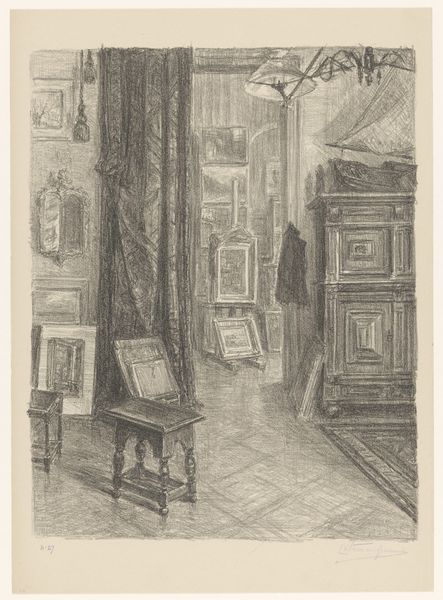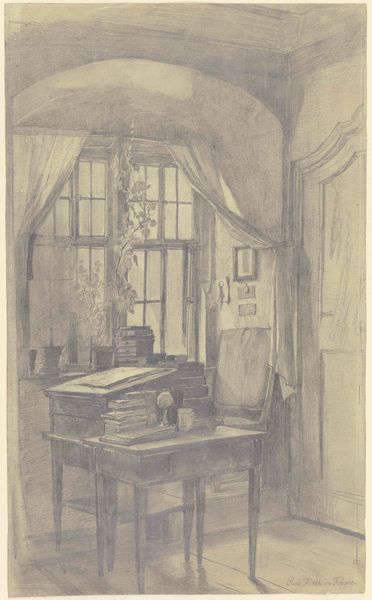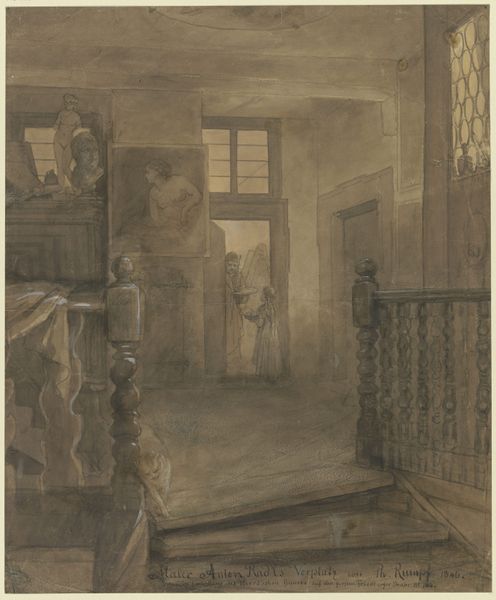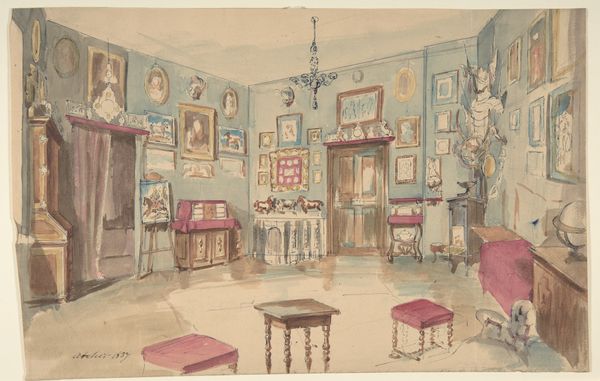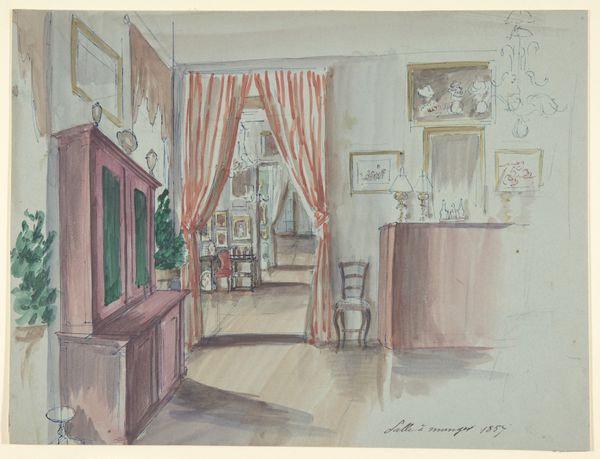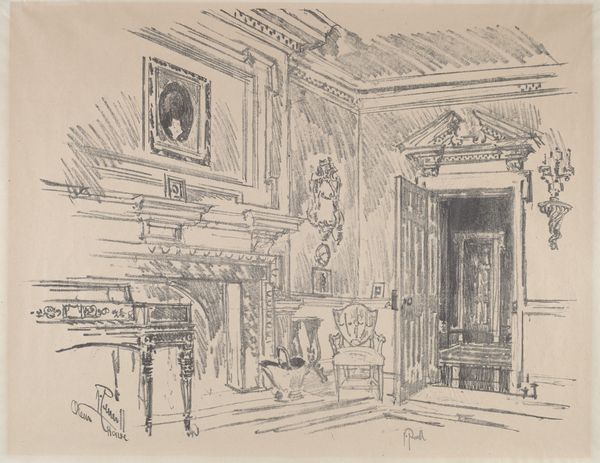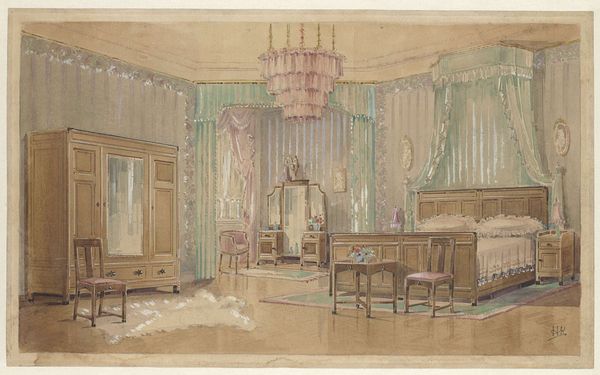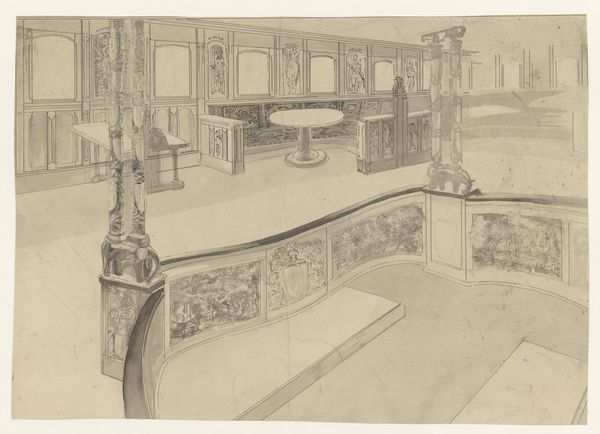
drawing, watercolor, architecture
#
drawing
#
16_19th-century
#
watercolor
#
romanticism
#
architecture
Copyright: Public Domain
Curator: Wilhelm Amandus Beer’s “Water Huis à Anvers,” rendered in watercolor, captures a scene of bourgeois domesticity. My immediate impression is of subtle asymmetries and quiet geometries in the composition, although rendered with delicate lines and subdued color. Editor: Yes, a bourgeois interior, indeed. But what story does this silent room tell about class, about gender, about the occupants who dwell, or perhaps *dwelt* within? This isn't simply a rendering of form but an archive of social meaning. Look at the modest furnishings; there’s nothing overt about the depiction, no symbols of status, only domestic contentment suggested. Where is this comfort situated on a larger stage? What's excluded? Curator: But let's consider the formal language. The interior is softly lit, as if viewed through a haze—the details obscured, softened by time and the artist’s hand. How do these pale washes affect your sense of its materiality? It feels very Romantic, capturing the essence rather than presenting precise details. The balance of the light versus dark wall further create a structured symmetry. Editor: "Romantic," yes, with its inherent idealization and focus on emotion over stark reality. The strategic placement of windows offers hints of connection to the outside, perhaps freedom. How much is the woman of the house, as one might presume lived there, able to leave, visit? How might her gender affect her ability to transcend these domestic structures and constrictions, or find liberation? Curator: We shouldn’t neglect how the artist manages to balance flat planes with implied depth using watercolor; look at the wood-panel detailing in relation to the windows; the effect is quietly masterful! Editor: Art allows the expression of what remains unsaid, of resistance in the most subtle ways, particularly if you read how interior decoration often functions as social signifiers. The aesthetic arrangement within spaces—while they can offer harmony and beauty— also tells silent stories, marking the identity and constraints imposed on different inhabitants through domestic display. I see both aesthetic balance, but also subtle questions about access to and forms of autonomy within that balance. Curator: Perhaps this invites a different way of interpreting the painting. This quiet study of Beer, can offer aesthetic comfort, it certainly gave me some solace. Editor: Then it certainly provides the comfort which this domestic space offered, a nice circle of art for arts sake.
Comments
No comments
Be the first to comment and join the conversation on the ultimate creative platform.
